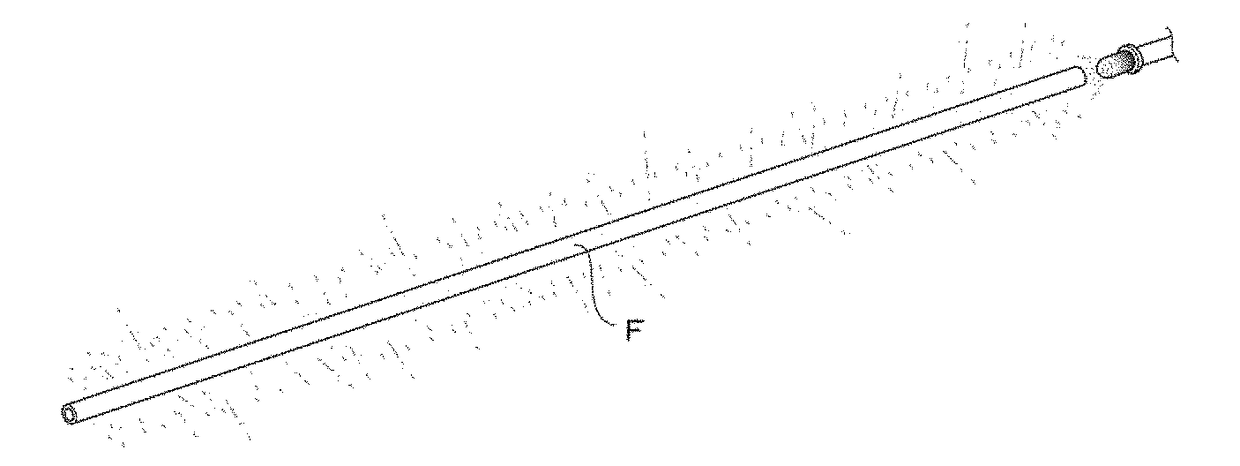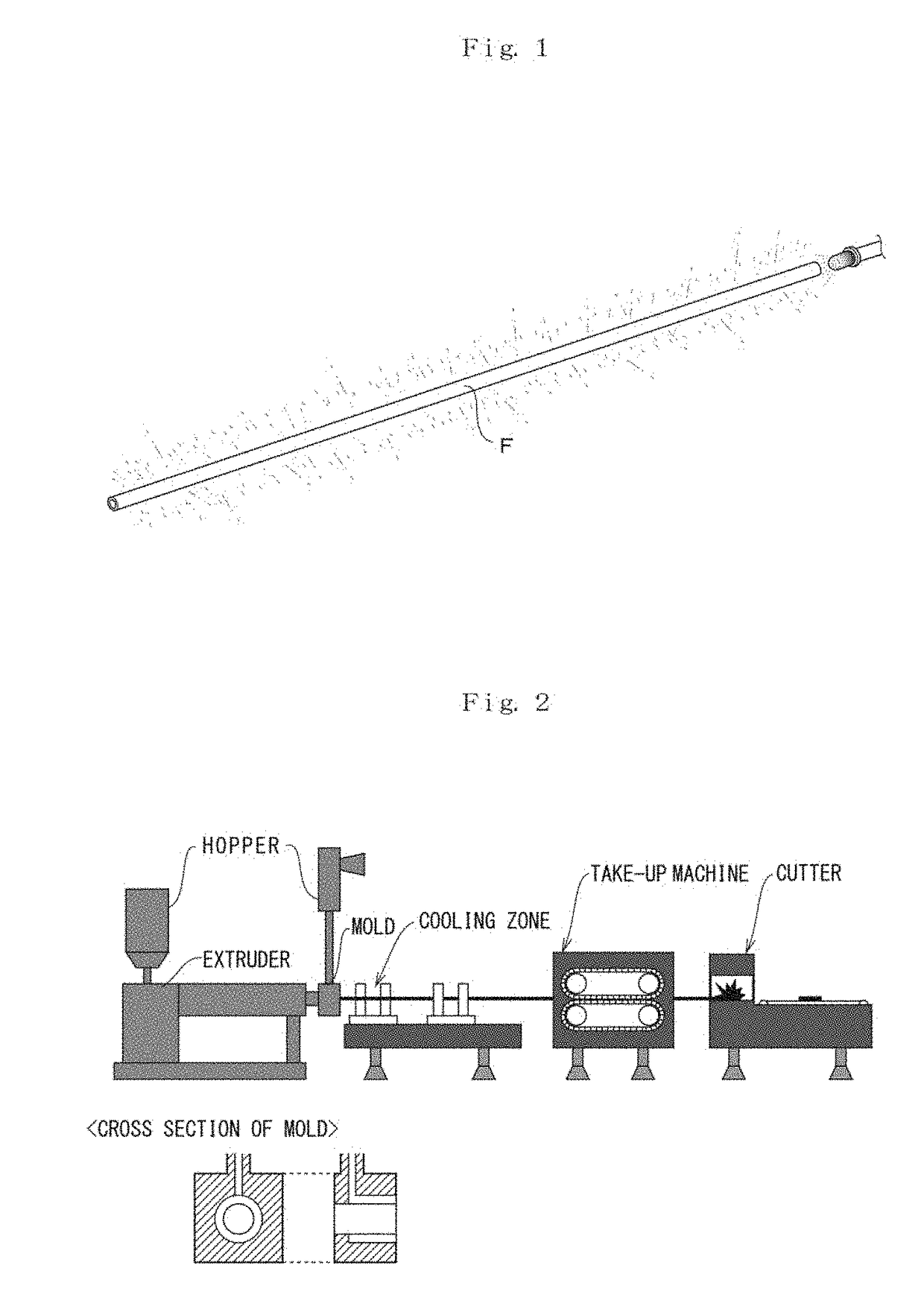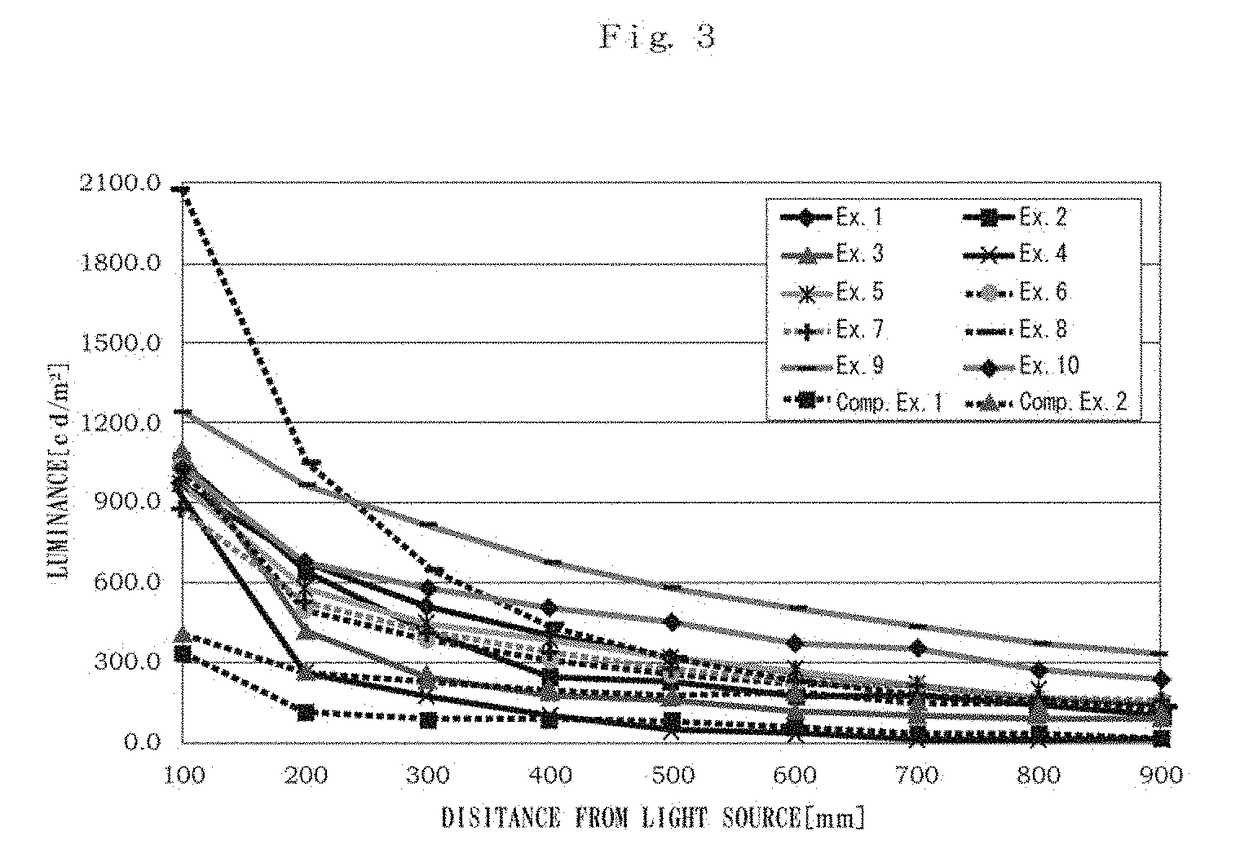A flexible linear light emitting element and a method of producing the same
a light emitting element and flexible technology, applied in the direction of instruments, cladded optical fibers, fibre light guides, etc., can solve the problems of limited application scope, achieve the effect of improving the luminance of the element, enhancing the light scattering effect, and largely improving the light emitting performan
- Summary
- Abstract
- Description
- Claims
- Application Information
AI Technical Summary
Benefits of technology
Problems solved by technology
Method used
Image
Examples
examples
[0036](Verification Test of Advantageous Effect)
[0037]The verification test of the present advantageous effects is explained as follows. In the first place, multiple samples which are different in production conditions from one another (a material of the cored layer and the clad layer respectively, a thickness of the clad layer, compounding a colorant into the clad layer or not) are prepared; and evaluations on flexibility, light emitting performance (luminance and attenuation rate), appearance and the anti-peeling property of the clad layer against the cored layer are made for the respective samples. The production conditions of the respective samples according to comparison examples 1 and 2 as well as the first to tenth examples are summarized as follows.
first example
[0040]In this example, a linear light emitting element is produced through co-extrusion molding by adopting MMA-BA block copolymer whose MFR under the test conditions of 190 degrees Centigrade in temperature and 2.16 kg in load is 3.1 g / 10 min and whose flexural modulus of elasticity is 400 MPa for the material of the cored layer; and adopting ETFE whose melting point, elongation, flexural modulus of elasticity and MFR under the test conditions of 297 degrees Centigrade in temperature and 5 kg in load are 226 degrees Centigrade, 430%, 810 MPa and 26.4 g / 10 min respectively for the clad layer. The thickness of the clad layer is defined as 0.24 mm, in which 0.065 parts by weight of titanium dioxide acting as a colorant is added against 100 parts by weight of the material of the clad layer.
second example
[0041]In this example, a linear light emitting element is produced through co-extrusion molding by adopting MMA-BA block copolymer whose MFR under the test conditions of 190 degrees Centigrade in temperature and 2.16 kg in load and whose flexural modulus of elasticity is 440 MPA for the material of the cored layer; and adopting ETFE whose melting point, elongation, flexural modulus of elasticity and MFR under the test conditions of 297 degrees Centigrade in temperature and 5 kg in load are 226 degrees Centigrade, 430%, 810 MPa and 26.4 g / 10 min respectively for the clad layer. The thickness of the clad layer is defined as 0.27 mm, in which 0.065 parts by weight of titanium dioxide acting as a colorant is added against 100 parts by weight of the material of the clad layer.
PUM
| Property | Measurement | Unit |
|---|---|---|
| temperature | aaaaa | aaaaa |
| Melt Flow Rate | aaaaa | aaaaa |
| melting point | aaaaa | aaaaa |
Abstract
Description
Claims
Application Information
 Login to View More
Login to View More - R&D
- Intellectual Property
- Life Sciences
- Materials
- Tech Scout
- Unparalleled Data Quality
- Higher Quality Content
- 60% Fewer Hallucinations
Browse by: Latest US Patents, China's latest patents, Technical Efficacy Thesaurus, Application Domain, Technology Topic, Popular Technical Reports.
© 2025 PatSnap. All rights reserved.Legal|Privacy policy|Modern Slavery Act Transparency Statement|Sitemap|About US| Contact US: help@patsnap.com



